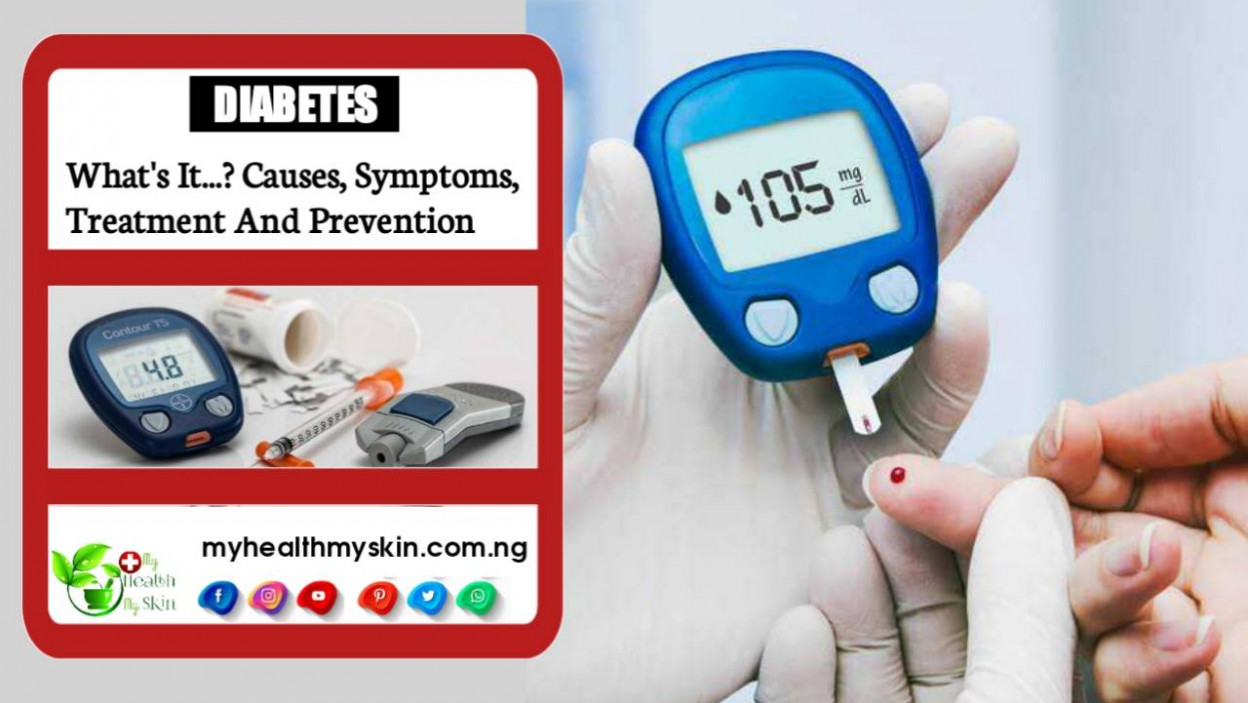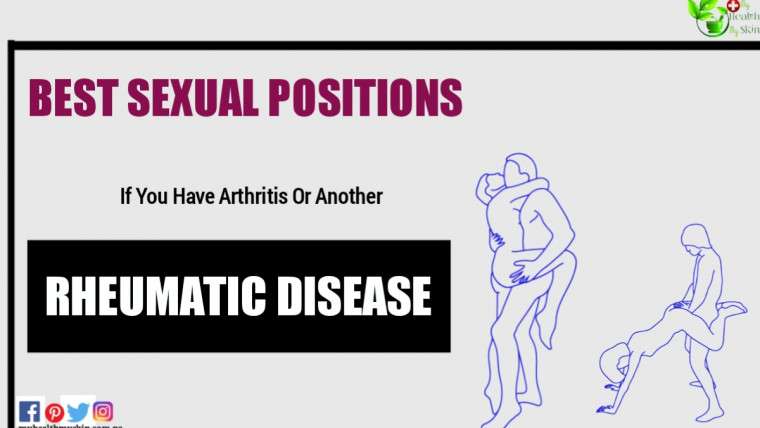About 11.2 million of the Nigerian population has diabetes. The most alarming thing is that this number grows every day. If you or someone close to you lives with this disease or has any suspicion, take the opportunity to read our article and learn everything about diabetes.
[lwptoc]
What Is Diabetes?
Diabetes is a disease related to the production or absorption of insulin. Insulin is a hormone produced by our body, in the pancreas, and which controls glucose concentrations in our body.
Insulin is hypoglycemic, that is, it facilitates the entry of glucose existing in the blood into various types of cells, especially muscle and liver cells, where glucose molecules are stored in the form of an insoluble reserve substance, glycogen. .
Glucagon, on the other hand, is a hyperglycemic hormone, because it favors the hydrolysis of hepatic glycogen, which leads to the release of glucose into the blood. They are, therefore, hormones of opposite action.
Glucagon works, under normal conditions; its effect is reinforced by adrenaline in stressful or emergency situations.
What Should We Watch Out For?
After a meal rich in carbohydrates, the glucose content in the blood is increased, that is, the blood glucose increases, which causes the release of insulin by the pancreas.
Insulin favors the entry of glucose into cells, mainly muscle and liver cells, while stimulating the formation of glycogen, thus reducing blood glucose.
With the reduction of blood glucose, the insulin content is reduced and everything returns to normal.
On occasions when you take a long time to eat a meal, your blood temporarily becomes low in glucose, which leads to hypoglycemia.
It is normal, on this occasion, to have some dizziness and drowsiness.
Immediately, the pancreas releases glucagon which, when directed to the liver cells, favors the hydrolysis of stored glycogen to the release of glucose into the blood, regulating blood glucose.
Glucose is a sugar molecule that is used for energy production. When we eat mainly carbohydrates (like bread, pasta and rice), these foods are turned into sugar by our body.
This sugar goes into our bloodstream and the job of insulin is to control everything so that the glucose levels in our body don’t get too high.
But why do glucose levels need to be controlled? When we have too much glucose in our bloodstream, we start to harm the functioning of our organs.
And that’s also why people with diabetes usually have vision problems or circulation problems, often leading to having to amputate a limb.
High blood sugar concentrations also impair diabetic healing, leading to serious complications.
Types Of Diabetes
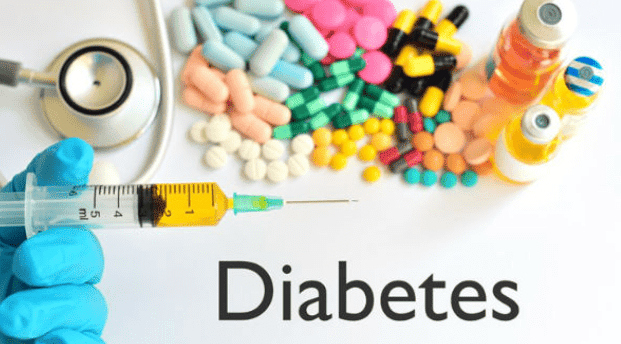
As we have already said, Diabetes is characterized by problems with the production or absorption of insulin , but according to the way this disease manifests itself, we can classify it as Type 1 or Type 2.
Type 1 Diabetes
Type 1 diabetes is genetic, meaning your father or mother probably has it too, and you have inherited the disease from them.
Another important feature of Type 1 Diabetes is that it is usually diagnosed in childhood or adolescence.
In some less serious cases, it is possible to control this type of diabetes only with the practice of physical exercises and with an adequate diet.
In the most severe cases, it is necessary for the person to administer insulin daily, which will ensure that blood glucose is regulated.
Type 2 Diabetes
Type 2 diabetes is when your body can’t properly use the insulin it makes, causing your glucose levels to get high.
Usually this type of diabetes is also related to overweight, high triglycerides, high blood pressure (hypertension), poor eating habits (such as excessive consumption of sugar, bread, pasta and fat) and lack of physical exercise.
It can be controlled with food and physical exercise, being essential that the person stop consuming large amounts of sugar and start consuming whole carbohydrates in addition to physical exercise.
LADA type diabetes – Latent Auto Immune Diabetes in Adults
In addition to these two types of diabetes, we still have LADA – Latent Autoimmune Adult Diabetes , which is a complication of type 2 diabetes.
LADA type diabetes usually occurs in people between the ages of 25 and 30, without overweight or high blood pressure, and is mainly characterized by the destruction of the beta cells of the pancreas, which are the cells that produce insulin.
That is, it is as if your body is destroying the cells in your pancreas and preventing it from producing insulin properly, leading to an increase in blood glucose, in other words, leading to diabetes.
Treatment is usually started with oral medication, but due to its severity, the patient usually needs to start insulin use quickly.
Pre Diabetes
Prediabetes is a condition that manifests before diabetes. It occurs as your body’s warning for you to cut back on sugar, refined carbohydrates, fat and start exercising.
Pre-diabetes is diagnosed through a blood glucose test. This is when your blood sugar is not high enough to be considered diabetes but is higher than what is considered normal.
Despite being a warning from the body, about 50% of people who have pre-diabetes end up evolving into type 2 diabetes, as they cannot change their eating habits and have a healthier life.
Gestational Diabetes
In addition to Types 1, 2, LADA and Prediabetes, we also have Gestational Diabetes. It occurs during pregnancy and is temporary, that is, while a woman is pregnant, her blood sugar levels are altered, but after the baby is born, everything returns to normal.
Gestational diabetes can also be considered type 2 diabetes. About 2 to 4% of pregnant women develop gestational diabetes.
That’s why it’s very important to do all exams during prenatal care.
Gestational diabetes can cause problems and complications for both the baby and the mother. Also, many women who develop gestational diabetes end up developing type 2 diabetes after giving birth.
If during our daily lives it is already important to take care of our health with a good diet and the practice of physical exercises, during pregnancy this becomes even more important.
Complications Of Gestational Diabetes
The baby can be harmed as its pancreas is forced to produce much more insulin, often becoming overworked.
Just imagine. The mother ends up ingesting more carbohydrates and sugar than recommended, the mother’s pancreas cannot produce enough insulin to normalize these blood sugar levels.
All this glucose is sent to the baby through the placenta. The baby’s pancreas starts trying to normalize glucose levels as well, producing more and more insulin. But as the baby is still very small, its pancreas can’t handle the production.
The baby’s body has nothing to do with all this sugar, and ends up storing it in the form of fat, leading to an overweight baby.
The biggest problem occurs at the time of delivery, when the umbilical cord is cut. All the sugar the baby was getting came from the mother. When the umbilical cord is cut, this sugar supply is cut off at once, which leads to hypoglycemia.
Hypoglycemia is when blood sugar levels drop all at once. Hypoglycemia in babies can cause the baby to be limp, lethargic, with tremors in the hands and feet, even having convulsions. If your blood sugar stays too low for a long time, it can even cause brain damage.
In addition to the complications caused for the baby, we also have the complications caused in the pregnant woman. As we have already said, diabetes directly affects the ability to heal. If the delivery is a cesarean, the chances of bleeding greatly increase. In normal delivery, complications and bleeding can also occur.
If you’re pregnant, it’s important to be extra careful with your diet and avoid the thought that a pregnant woman should eat for two, that’s not right, especially when it comes to sweets and foods rich in carbohydrates.
What Are The Symptoms Of Diabetes?
In general, all types of diabetes start with the same symptoms: excessive hunger, thirst and a strong desire to urinate.
However, each type has unique symptoms.
Symptoms of Type 1 Diabetes:
- Very hungry
- Very thirst
- Urge to urinate several times a day
- Weight loss
- Weakness
- “Laziness”
- Sudden mood swings
- Nausea and vomiting
- Nervousness
Symptoms of Type 2 Diabetes:
- Very hungry
- Very thirst
- Skin, bladder and kidney infections often
- Delay in wound healing
- Blurry vision
- Tingling in the feet
- Boils on the feet
Symptoms of Diabetes LADA
- Very hungry
- Very thirst
- Weight loss
- Weakness
- “Laziness”
- Sudden mood swings
- Nausea and vomiting
- Nervousness
Note that the symptoms of LADA diabetes are the same as those of type 1 diabetes. If you go back a few topics in our article, you will see that LADA is considered a complication of type 2 diabetes.
Type 2 diabetes is “acquired” diabetes and can manifest at any age. While type 1 diabetes is diabetes that is “inherited” from our parents and manifests itself while we are children or young people.
LADA diabetes is like type 1 diabetes, which is inherited, but which only manifests in adulthood. That’s why her symptoms are the same as the symptoms of type 1 diabetes.
Symptoms Of Prediabetes
People with prediabetes do not have any symptoms of diabetes. Prediabetes is usually diagnosed through routine exams, the ones we do every year to see if everything is ok with our body.
Not to say that there are no symptoms, we can say that the vast majority of patients (but not all) are overweight.
Symptoms Of Gestational Diabetes
- Very thirst
- The urge to urinate all the time
- Tiredness
Realize that the symptoms of gestational diabetes are confused with the normal symptoms of pregnancy. That’s why it’s very important to keep all prenatal exams up to date.
Many pregnant women who neglect these tests end up developing gestational diabetes and don’t even realize it, thinking that the urge to urinate, thirst and fatigue are just due to pregnancy.
Diabetes Risk Factors
Even if you don’t have any of the symptoms, it’s important that you keep an eye out if you have any of the risk factors for diabetes.
Type 1 Diabetes Risk Factors
Since it has a genetic cause and is inherited from one (or both) parents, it is important that you know your parents’ health history. Do any of them have diabetes? If so, let your doctor know and get periodic checkups.
If you have diabetes and have young children, it’s important to let your pediatrician or family doctor know so they can keep an eye on your little ones’ blood sugar levels.
Type 2 Diabetes Risk Factors
- Prediabetes diagnosis
- High pressure
- High cholesterol
- Overweight people, especially those where most of the fat is in the belly
- Close relatives with diabetes
- Recent mothers who had gestational diabetes
- Women with polycystic ovary syndrome
- People with sleep apnea
LADA Diabetes Risk Factors
As Lada can be considered a type 2 complication, or is considered a late onset type 1 diabetes, you should keep an eye on the risk factors of type 1 diabetes as well as type 2 diabetes.
- Parents with diabetes
- Prediabetes diagnosis
- High pressure
- High cholesterol
- Overweight people, especially those where most of the fat is in the belly
- Close relatives with diabetes
- Recent mothers who had gestational diabetes
- Women with polycystic ovary syndrome
- People with sleep apnea
Risk Factors for Gestational Diabetes
- Old age pregnancy
- Pregnant women who gain a lot of weight during pregnancy
- High pressure
- High cholesterol
- Overweight before getting pregnant
- Polycystic ovary syndrome
- Family history of diabetes
- Twin pregnancy
- Gestational diabetes in other pregnancies
Diabetes Mellitus – Diagnosis
We usually come across some type of diabetes symptom and then we go to a doctor. The doctor will then order some tests to prove or rule out the disease.
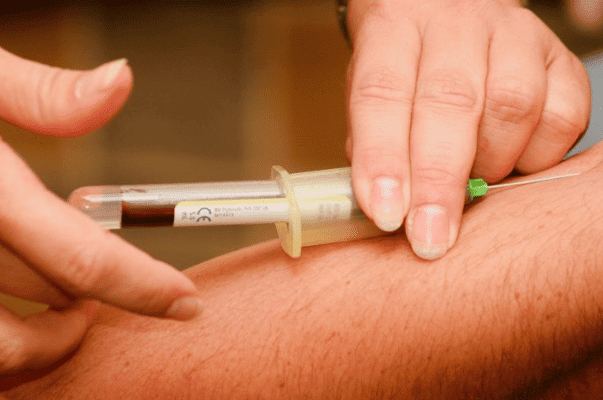
There are 3 tests that are the most common to diagnose diabetes:
– Fasting Blood Glucose
You should fast for at least 12 hours. Then you will go to the laboratory to take a blood sample. The laboratory will analyze the levels of glucose (sugar) in your blood after these hours of fasting.
Your result is expected to be between 70 to 99 milligrams per deciliter of blood (mg/dl).
If you get results between 100 and 125mg/dl, you’re still within the limit, but you need to keep an eye out. Your doctor will review your case and may order another test or ask you to repeat the tests after a while.
Some doctors, in some cases, consider diabetes above 140mg/dl, but regardless of your result you should take your exams to your doctor. Only he can give you a diagnosis of Diabetes.
– Glycated Hemoglobin
Hemoglobin is a protein that is present in red blood cells, in our blood. This protein binds to glucose molecules.
The red blood cell lasts an average of 90 days. So when we look at Glycated Hemoglobin, we are looking at the glucose that has been present in the blood for the past 60 days.
This test is used to analyze whether we have had an increase in blood glucose (sugar) concentration in the last 60 days.
Even though red blood cells have a lifespan of 90 days, we cannot analyze the last 90 days, so the test is only effective in the last 60 days.
Even if your fasting blood glucose test showed normal results, you may have abnormal results on your glycated hemoglobin test.
This is because you may have spikes in blood glucose at other times, not maintaining consistently high concentrations.
These spikes in glucose can also be a sign of diabetes, so it’s important that your doctor reviews all of your tests to make a diagnosis of diabetes.
Typically, expected results are between 4.5 and 5.7%. Tests with results between 5.7 and 6.4% may indicate pre-diabetes.
Results greater than 6.5% usually indicate diabetes.
Glycemic Curve
The glycemic curve test will measure how quickly your body absorbs glucose after eating sugar. This exam is often requested as a routine in prenatal care to diagnose gestational diabetes.
You must go for the exam on an empty stomach. A blood sample will be collected.
Then you should ingest 75g of glucose. After 120 min, you should collect another blood sample.
It is expected that in fasting your result will be below 100 mg/dl and after 2 hours in 140 mg/dl.
Results above 200 mg/dl are suspect for diabetes.
Treatment For Diabetes
If you’ve already been diagnosed by your doctor and you actually have diabetes, it’s time to worry about treatment.
Before we start, I would like to remind you that only your trusted doctor can tell you which drug is best for you.
Always follow the doctor’s recommendations to the letter and never stop or change medication without consulting your doctor first. Nothing written here replaces a medical consultation.
Once diagnosed, the treatment of diabetes will aim to control the glucose present in the patient’s blood, preventing it from showing peaks or drops throughout the day.
Here are the types of treatment for each type of diabetes:
Type 1 Diabetes Treatment
Treatment for type 1 diabetes requires the following measures
Insulin Application
Patients with type 1 diabetes require daily injections of insulin to keep blood glucose in the normal range.
To make this measurement it is necessary to have a glucometer at home, a device capable of measuring the exact concentration of glucose in the blood.
Insulin must be applied directly to the subcutaneous tissue (layer of fat cells), just under the skin.
The best places to inject insulin are:
- Abdomen (tummy)
- Thigh (front and outer side)
- Arm (back of upper third)
- waist region
- Gluteal (upper and side of buttocks).
Use Of Specific Medications
In addition to prescribing insulin injections to lower blood sugar, some doctors ask that patients also include oral medications in their treatment. The most commonly used drugs to treat type 1 diabetes are:
- De-diafix herbal supplement
- XR glyph
- metformin.
Treatment For Gestational Diabetes
Treatment for women who have gestational diabetes is aimed at lowering the sugar levels in the mother’s bloodstream in order to prevent it from also harming the baby’s development. Here’s how to treat gestational diabetes.
Careful Monitoring Of Your Baby
Women who have a condition of gestational diabetes need to observe how their baby is growing and developing, with ultrasounds and other tests.
Use Of Specific Medications
If a balanced diet and exercise are not enough, a pregnant woman may need insulin injections to lower her blood sugar. Some doctors also prescribe oral medications to control blood sugar.
Type 2 Diabetes Treatment
People who are diagnosed with type 2 diabetes rely on specific practices in treating the health condition. Check it out below:
Treatment Of Type 2 Diabetes Comorbidities
In general, type 2 diabetes is accompanied by other problems, such as obesity and overweight, physical inactivity, high triglycerides and hypertension.
In this way, it is important to consult your doctor and also take care of these other diseases and problems that can appear along with type 2 diabetes.
This will make the person with diabetes guarantee their health and be able to control all diseases more safely.
Medications To Treat Type 2 Diabetes
Among the drugs that can be used to control type 2 diabetes are:
- Alpha-glucosidase inhibitors: These are drugs that prevent the digestion and absorption of carbohydrates in the intestine.
- Sulphonylureas: Stimulate pancreatic insulin production by pancreatic beta cells, have high A1C lowering potential (up to 2% on average), but can cause hypoglycemia.
- Glinides: oral nateglinide and repaglinide. They also act by stimulating the production of insulin by the pancreas.
Treatment For Prediabetes
In most cases, the treatment of pre-diabetes begins with guidelines for changing lifestyle habits: diet with reduced calories, saturated fats and carbohydrates, especially simple ones, in addition to encouraging physical activity.
In some cases, the responsible physician may choose, together with the patient, to start treatment with medication to prevent the progression to diabetes.
It is worth remembering that in patients with pre-diabetes, whether they are overweight or obese, the loss of about 5% to 7% of body weight already leads to an important metabolic improvement.
Cut The Cigarette
Studies show that diabetes and smoking multiply the risk of heart attack by up to five times. The substances present in cigarettes help to create accumulations of fat in the arteries, blocking circulation. Consequently, the blood flow gets slower and slower, until the moment the artery clogs. Furthermore, smoking also contributes to hypertension in the patient with diabetes.
Take Care Of Your Oral Health
It may even seem to have no direct relationship, but oral hygiene after each meal for the patient with diabetes is essential.
This is because the blood of people with diabetes, with a high concentration of glucose, is more conducive to the development of bacteria.
As a food entry route, the mouth receives several foreign bodies that, added to the accumulation of food remains, favor the proliferation of bacteria.
Performing a good brushing and going to the dentist once every six months is essential.
Most Commonly Used Drugs For Diabetes
Depending on each case and varying from person to person, the doctor may prescribe the following medications:
- De-diafix Herbal Supplement
- Metformin Hydrochloride (as Glifage XR)
- galvus
- glibenclamide
- Januvia
Your doctor can tell you which drug is most suitable for you, as well as the correct dosage and duration of treatment.
Always follow your doctor’s instructions to the letter and never self-medicate.
Do not stop using the drug without consulting a doctor first, and if you take it more than once or in much larger amounts than prescribed, follow the instructions on the package insert.
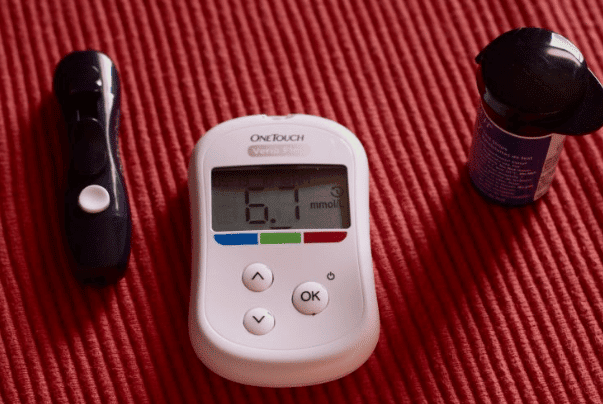
In diabetic patients, hypoglycaemia (low blood sugar) has occurred during fluoxetine hydrochloride therapy and hyperglycaemia (high blood sugar) has occurred after discontinuation of the drug.
Therefore, the dose of insulin and/or oral hypoglycemic agent may have to be adjusted when treatment with this medication is established and after its suspension, always talk to your doctor about medication you are taking.
Possible Complications Of Diabetes
Diabetic Retinopathy
They are small lesions that appear on the retina of the eye, which can cause bleeding and, as a consequence, the loss of visual acuity.
Arteriosclerosis
It is the hardening and thickening of the artery wall.
You May Also Like:
- Okra water as a Natural treatment for Diabetes
- Cuminus Oil: 41 Potential Health Benefits And Side Effects
- Calculus Bridge: Causes, Side Effects, Removal & Prevention
- Effective Treatment Package For Infertility In Men And Women With No Side Effects – 100% Organic
- Casuses And Treatment For Deep Vein Thrombosis
Hypertension
It comes as a consequence of obesity – in the case of type 2 diabetes – and the high concentration of glucose in the blood, which impairs circulation, in addition to arteriosclerosis that also contributes to the increase in pressure.
Infections
The intense increase in glucose can cause damage to the immune system, which creates a greater risk for a person with diabetes to contract some type of infection.
This is because white blood cells (responsible for fighting viruses, bacteria, etc.) are less effective with hyperglycemia.
High blood sugar also makes it conducive for fungi and bacteria to proliferate in areas such as the mouth and gums, lungs, skin, feet, genitals and surgical incision site.
Diabetic Neuropathy
According to the Ministry of Health, diabetes is the most common cause of peripheral neuropathy and deserves special attention because this is the most common and most disabling chronic complication of the disease.
It accounts for about two-thirds of non-traumatic amputations (which are not caused by accidents and external factors).
It consists of leaving the nerves unable to send and receive messages to the brain correctly, which causes symptoms such as tingling, numbness or burning in the legs, feet and hands, local pain and imbalance, muscle weakness, hair trauma, low blood pressure, digestive disorders, excessive sweating and even sexual impotence.
Diabetic Nephropathy
These are changes in the blood vessels of the kidneys that cause a loss of protein in the urine. The organ can even reduce its function slowly, but progressively until it causes its total paralysis.
Myocardial Infarction And Stroke
These two conditions can occur when large blood vessels are affected, leading to blockage (arteriosclerosis) of vital organs such as the heart and brain.
That’s why proper glucose control, physical activity and medications that can fight high blood pressure, increased cholesterol and quitting smoking are essential safety measures.
The incidence of these life-threatening problems is two to four times higher in people with diabetes.
Diabetic Foot
Diabetic foot is a condition that occurs when a bruised or infected area on the feet of someone with diabetes develops an ulcer (sores).
This can happen when blood circulation is poor and blood glucose levels are poorly controlled.
Any foot injury should be treated as soon as possible to avoid complications that could lead to amputation of the affected limb.
Living With Diabetes And Prognosis
We advise diabetic patients to always:
- Carry out daily analysis of the feet to avoid the appearance of injuries – it is even worth using a mirror to view the soles of the feet every day;
- Maintain a healthy diet, low in sugar and refined carbohydrates;
- Use prescribed medications exactly as instructed by the doctor;
- Practice physical activities;
- Maintain good glycemic control, correctly following medical guidelines.
Preventing Diabetes
Patients who have a family history of diabetes should be advised to:
- Maintain normal weight
- Do not smoke
- Control blood pressure
- Avoid medications that could potentially harm the pancreas
- Practice regular physical activity.
Did you like our information about this recurring disease that has been increasing over time? Have you been diagnosed and do you have medication prescriptions in hand? Send us a message HERE to get your diabetes medication right now!


If you want to read more articles similar to diabetes: what’s it? causes, symptoms, treatment and prevention, we recommend you visit our Physical & Mental Health category. Share on your social networks and stay tuned for upcoming articles.
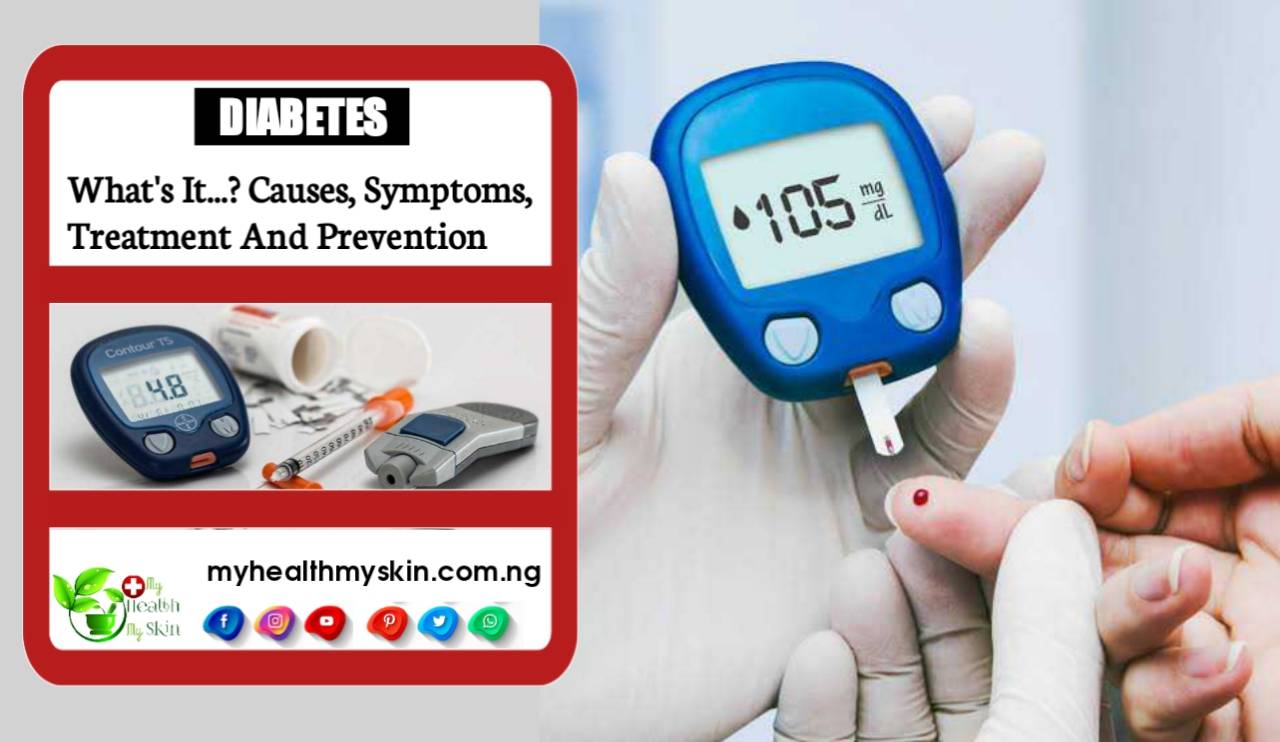
Still Have Questions And Would Like More Clarification Diabetes? Would You Like To Leave Your Opinion Or Suggestion? Comment Below And We Want To Know What You Think!

